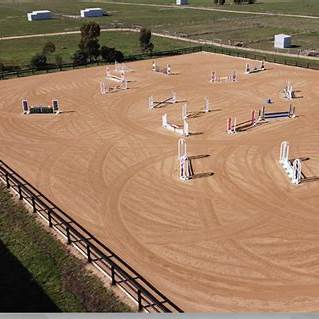Property Value Impact and Arena Construction: The Importance of a Well-Built Arena
- sean69722
- Sep 4, 2024
- 4 min read
Investing in a correctly constructed, high-quality equestrian arena can significantly enhance the value of your property. A professionally built arena improves both the aesthetic appeal and functionality of your estate, making it more attractive to a broader range of potential buyers, particularly equestrian enthusiasts. For properties with equestrian facilities, a well-designed arena adds a premium that increases market appeal and salability.
A top-notch arena not only boosts your property’s value but also offers potential for income generation. Many property owners use their arenas for training, hosting clinics, or leasing to local riders, creating a steady stream of revenue. This makes the property appealing to buyers who might be interested in turning the arena into a business asset.
Conversely, an improperly built arena can have detrimental effects. Poor drainage, uneven surfaces, and rapid wear and tear can lead to costly repairs and remedial work, undermining the value of the property. These issues not only detract from the overall appeal of the property but can also lower its salability, making it less attractive to buyers who would otherwise be willing to pay a premium for a well-constructed arena.
By investing in high-quality construction and materials from the start, you can avoid these costly mistakes and ensure the long-term functionality of your arena. This not only protects your investment but enhances the value, attractiveness, and potential profitability of your property.
1. Size, Location, and Earthworks
The size and location of your arena, along with the earthworks required, are crucial factors in determining costs. Proper earthworks require a range of machinery, such as graders and compaction equipment, to ensure the ground is levelled and consolidated effectively. Although using this equipment may increase initial expenses, it ultimately saves money in the long run by extending the lifespan of the arena. Expert grading ensures surface consistency and levelness, which are essential for both horse and rider comfort. Additionally, arenas located on uneven terrain or in poor soil conditions may require more extensive groundwork, further influencing costs.
2. Drainage System
One of the most critical elements of arena construction is the drainage system. Proper drainage not only increases the usability of the arena during various weather conditions but also prolongs its lifespan by protecting the underlying layer works and sand from water damage.
While a sub-surface pipe drainage system isn't always necessary for adequate drainage, having one significantly improves the arena’s functionality. A well-drained arena will reduce downtime after rain and ensure it remains in excellent condition over time.
3. Watering System
Maintaining the moisture level in the arena surface is essential for both horse welfare and surface durability. A watering system keeps the surface compacted and reduces dust, which makes riding more pleasant and prevents surface wear. While installing a watering system is an upfront cost, it can save you money on surface replacements and maintenance in the long run.
4. Maintenance Equipment: Arena Rakes
Once your arena is constructed, regular maintenance is necessary to keep the surface in top condition. Investing in an arena rake ensures that the surface remains level and free from irregularities. Regular raking helps to prolong the life of your arena surface and improves the consistency of footing for the horses.
Arena Surface Options: The Most Expensive Part of the Build
The choice of surface material is one of the most critical and costly factors when constructing an equestrian arena. Silica and fibre surfaces are widely regarded for their durability and excellent ride quality, making them a popular choice in top-tier arenas worldwide. These surfaces are thoroughly researched and are the standard in most high-performance arenas abroad.
However, in Johannesburg, sourcing high-grade equestrian silica and quartzite can be expensive due to the location of quarries, which are often far from equestrian centres. The extensive processing and handling required to produce high-quality equestrian silica further increases its cost, making it one of the pricier options available.
If you're working within a tighter budget, local alternatives such as river sand or plaster blends offer a more affordable solution. Not only do these options cut down on transportation and material costs by utilizing nearby quarries, but they also contribute to local economies. However, it's important to note that while these surfaces can be more cost-effective initially, they may require more frequent maintenance and may not provide the same longevity or performance as silica/fibre surfaces.
Choosing the right surface for your arena depends on both your budget and long-term goals, and it’s essential to weigh the upfront costs against the potential need for ongoing upkeep
Final Thoughts: Get Expert Advice
Constructing an equestrian arena is a major investment, and cutting corners can affect the quality and longevity of your project. At Harrogate Civil Equestrian, we specialize in building professional equestrian arenas tailored to your needs. Whether you need help with the initial earthworks, drainage systems, or selecting the right surface materials, we provide expert guidance and high-quality workmanship every step of the way.
Get in touch with us today to discuss your arena project. We’ll help you find the best solution to meet your needs and budget, ensuring a long-lasting, top-quality result.














Comments